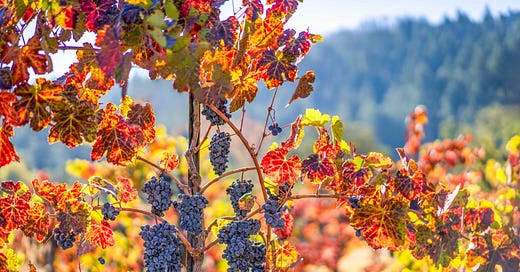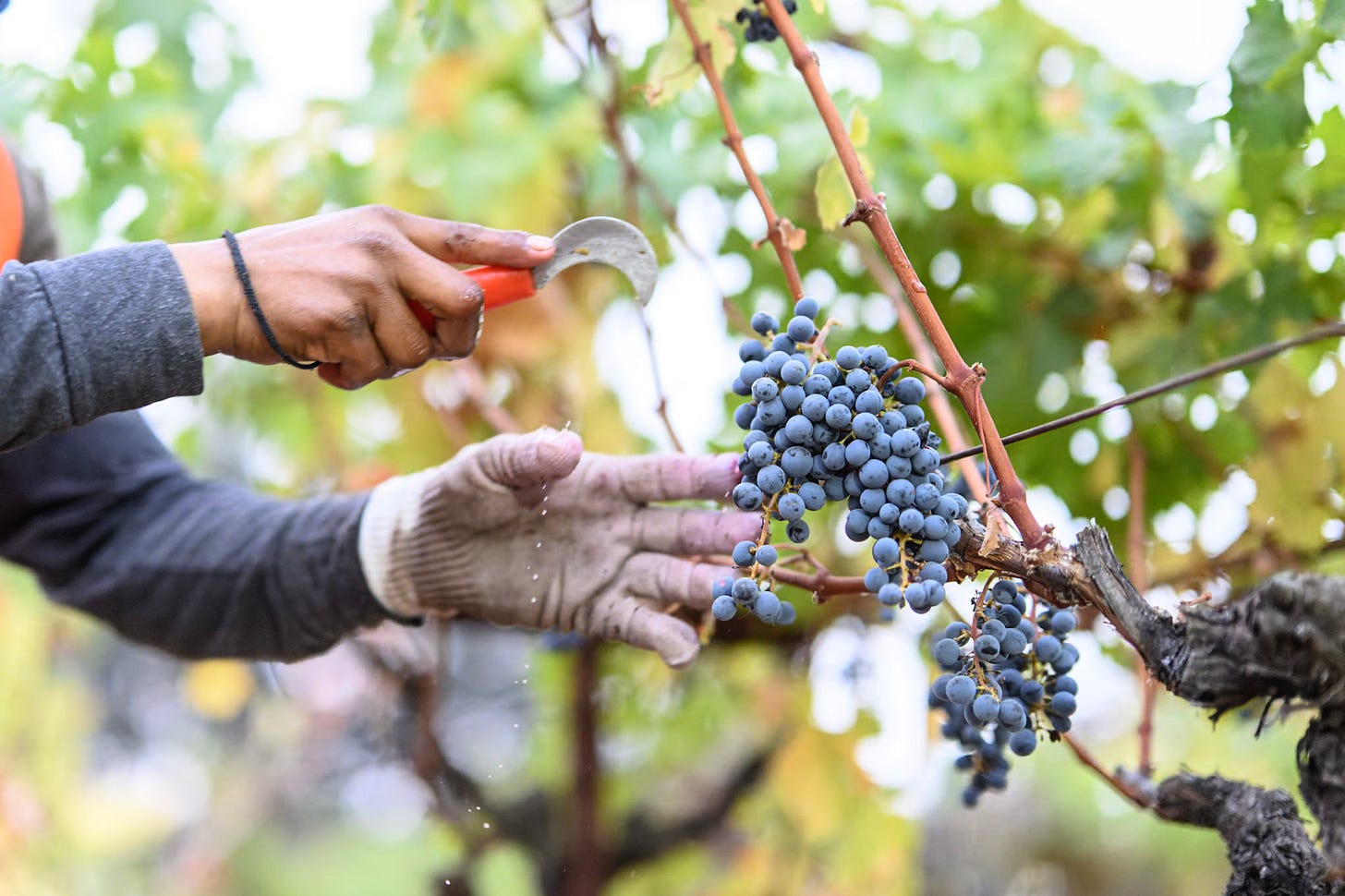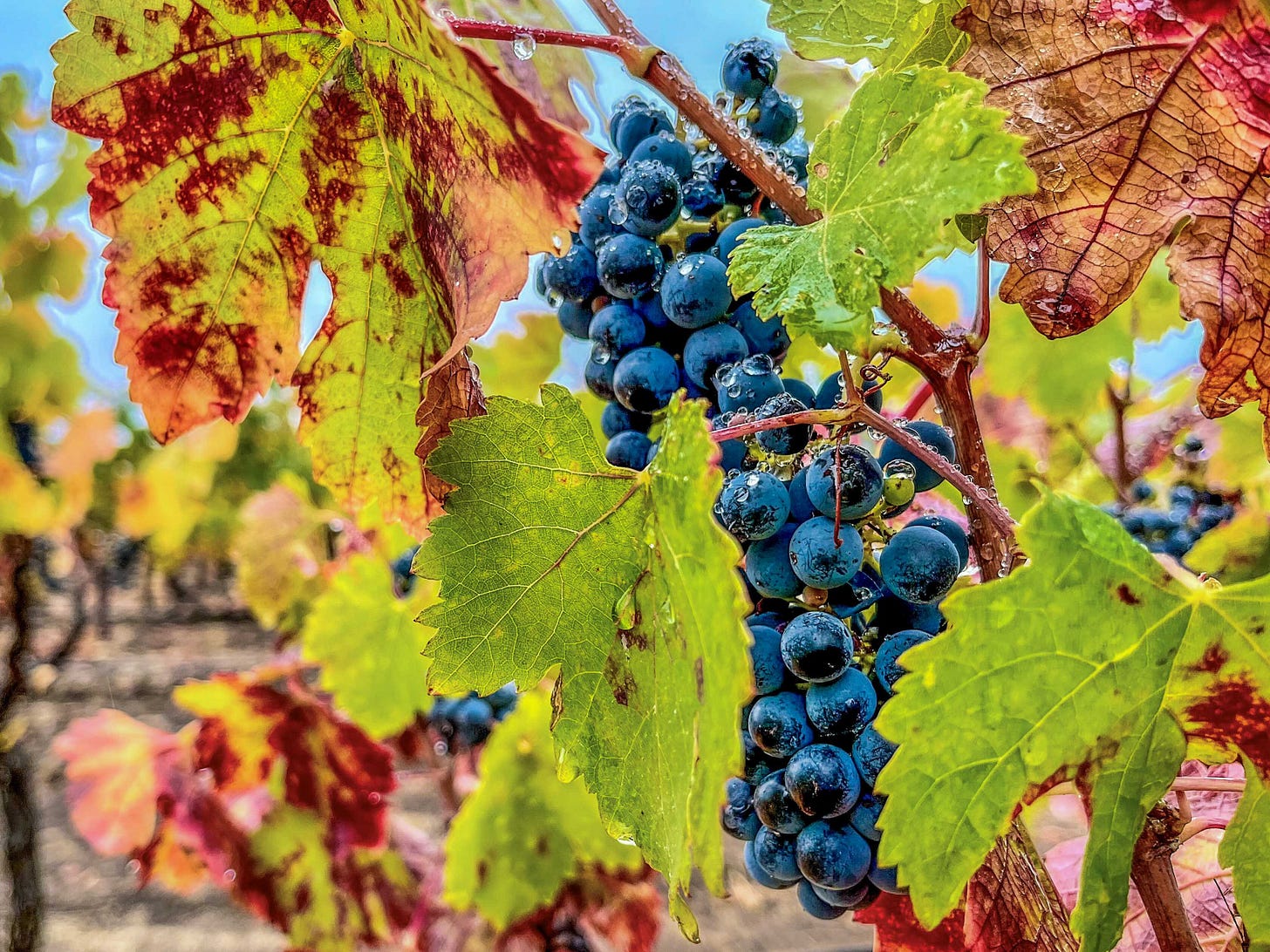NAPA VALLEY, Calif. — There’s no place like Napa Valley during harvest season. This small valley, home to hundreds of wineries, thousands of acres of planted vineyards and an entire industry built for and around winemaking, dons its most spectacular autumnal attire at this time of year.
Unlike most communities around the world, where the only sign of passing time is the changing seasons, here the lifeblood of the community — wine grapes — are harvested once a year. Each vine produces only a single crop that will be transformed, sometimes with meticulous hand-crafted care and sometimes with industrial prowess, into a single vintage of wine. Each of these vintages carries with it the mark of the time, place and people involved in its creation.
This distinct approach sets us apart not only from industries that manufacture goods throughout the year but also from the majority of agricultural communities that experience multiple harvests. Napa Valley stands unique in its near-exclusive dedication to wine as its economic lifeblood. While this hyper-focus and reliance on a singular harvest presents its own sets of challenges, it also gives rise to the valley's most enchanting and celebrated season.
This time of year, the air is crisp and filled with the aromas of drying leaves, fermenting wine and the pungent, sharp-sweet smells of drying pomace — leftover grape skins and stems — waiting in enormous piles in vineyards to eventually be plowed back into the soil for regeneration and nourishment.
It's not just the locals who feel the palpable allure of this singularity of time and place. Visitors flock to the region to bask in the glory of the harvest. There's something deeply human about celebrating our connection to and reliance on nature — a near-visceral reaction. By our very nature, we depend on the Earth for our health and well-being. Every morsel of nourishment we consume can be traced back to the Earth, sun, water and air. Look a bit deeper and you'll find that we, too, are made of these elements.
As Carl Sagan would say during his 1980s book and television series "Cosmos," "The cosmos is within us. We are made of star-stuff. We are a way for the universe to know itself." These lines capture the notion that the elements composing everything on Earth, including humans, originated in the cores of stars. It's a way to visualize our intrinsic connection to the universe at large — the interconnectedness of all things.
And here we are, in a world that often seems out of control — with too many wars, too much division and a near-constant undercurrent of vitriol and anger. Yet we're also able to pause, to take a deep breath, and to savor all that this place has to offer at this special time of year. When we do, perhaps we can remember what truly matters — that peace is possible and that the world we inhabit is miraculous, mysterious and marvelous.
Survey Results (so far)
Last week, we sent out our newest pulse poll survey. There is still one day remaining, so head on over and cast your vote. The preliminary results are as follows:
Approximately 73% of subscribers are using the free service, while the rest have opted for the $5-per-month subscription, paid for a full year or became Founding Members.
The survey participation rate was 9.5%.
50% of respondents say that our ad-free service is one of the reasons they subscribe, while 23% were unaware of this feature and 27% didn't mind either way.
The poll suggests that Founding Members would like occasional special content (46%) and a third are OK with us adding their names to our website (30%). Oddly, we had 106 responses in this section but only have 41 Founding Members.
99% of paid subscribers feel that they "support a valuable resource."
43% of non-paying subscribers are split between "Why pay for something I can get for free?" and believing (tongue-in-cheek, we hope) that writers and photographers who contribute to Napa Valley Features don't need money.
When it comes to the frequency of receiving content, 60% of respondents prefer a few times a week, 35% prefer one original story every morning, and 6% would like multiple posts per day.
Topics of most interest include in-depth journalism (52%) and profiles of local people (20%).
Wine/restaurant reviews are of least interest to 42% of the respondents.
Suggestions from respondents include adding Letters to the Editor (44%), including obituaries (13%) and featuring health and wellness topics (28%).
For all who participated, thank you. We've learned a lot, and your feedback has sparked quite a bit of excitement along with new ideas. For the 90% of our subscribers who didn't participate this time, don't worry; you have one day left and can always leave comments and suggestions as an active member of the Napa Valley Features community. We will use this feedback as we continue to evolve and refine our offerings to better serve you.
Last Week
Beyond the survey, we had the fourth in a series focused on the economic conditions of Napa Valley, asking the question, "Is Napa Valley in an economic bubble?" We also heard from insider Evy Warshawski about the plight of many local production companies who are finding it impossible to find space to showcase their plays and productions to audiences. Dave Stoneberg and new contributor Shannon Murray Kuleto shared an inspiring piece about Craig Bond and his 50-year career bringing music to school children and the community.
We also heard about Napa Valley residents — Marilyn Asmuth and her husband Paul, and Linda York — who were forced to flee Israel after the horrific attacks by Hamas terrorists, eventually finding their way out, but not before harrowing tales of survival and courage.
In a lighter vein, we learned about some locals who are actively involved in the bird-watching community, providing hobbyists and scientists important data to track the health of local bird populations.
Next Week
Next week offers more insight into the economic challenges faced by the wine industry, the impact of China's economic downturn on our local community, a coffee-roasting company that has expanded its business footprint, Anne Ward Ernst telling us about how the Forni family is continuing the legacy of heirloom vegetable starts after relocating from Calistoga to Santa Rosa, and Virginie Boone updating us on the status of a popular family-owned winery, Lang & Reed.
We extend our gratitude to each of you who has taken the time to fill out our survey — or plans to do so soon. At Napa Valley Features, we invest our time and resources into creating valuable content, while you, our paid subscribers, invest your resources in us. We don't rely on ad revenue; we're community supported. Your contributions fuel our mission and ensure our continued presence. If you cannot pay at this time, please consider helping us spread the word by liking our content and sharing it on social media as well as with friends and family who might value local content. Thank you all for making this venture not only possible but also sustainable.
Tim Carl is a Napa Valley-based photojournalist.









now is the time to start using some other content providers for travel articles.......I gave Sasha an article about our Trans-Canadian rail trip some time ago. Jed Christensen